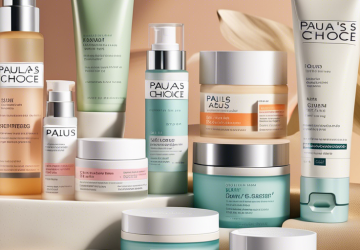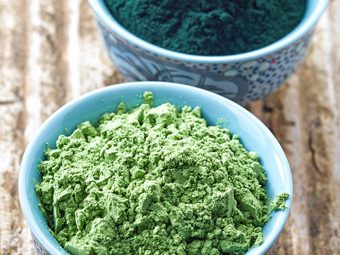[ad_1]
Menstrual cramps are common among women. While painkillers seem to be the only resort for many, they also come with many side effects. But recently, the sitz bath, widely known as the hip bath, has become popular for its multiple benefits and negligible side effects. It not only works for menstrual cramps but has also been prescribed to relieve pain in hemorrhoids, anal fissures, constipation, prostatitisi XA condition where the prostate gland in males gets inflamed due to infection and leads to severe pain. , and even in the postnatal phase of a vaginal delivery. A sitz bath can be life-changing for many dealing with pain. In this article, we discuss the sitz bath, how it works, its benefits, and possible risk factors. Keep reading.
What Is A Sitz Bath?
Individuals experiencing swelling, itching, or pain in the perineal region (comprising the vulva, anus, and urethra) are often suggested by doctors to bathe it in a tub filled with warm water – called the sitz bath. Pour some warm water up to a few inches, ensure the temperature is comfortable, and dip your lower body into it up to your pelvis. Practice this at least 3 times a day, or more, as per your doctor’s advice. Your doctor might also prescribe an oil or a medicine to be added to the water.
Stylecraze Says
Do not take a sitz bath if you have open wounds in the perineal region.
Let us now look at how a sitz bath works to heal pain.
How Does A Sitz Bath Work?
When you soak your pelvis in warm water, the heat allows your muscles, especially the sphincter, to relax. It also increases blood circulation to the perineal region and eases the pain. Doctors often prescribe medicines to add to the warm water. These help treat infections by fighting the pathogenic bacteria.
Did You Know?
Sitz baths have tissue-healing properties. Use sitz baths, frequently with additional salt or Epsom salts, whenever you have a wound in the perineal area.
Let us now find out some of the health benefits of taking a sitz bath.
Health Benefits Of Sitz Baths
1. Make Vaginal Delivery Smoother
The vulva remains sore and swollen for quite some time after a vaginal delivery. Dipping the pelvis in warm water for some time not only helps clean the perineumi XThe area between the inner thighs that starts from the urethra and ends at the anus, comprising the vagina in females and penis in males. but also relaxes the stiff muscles and relieves pain to a large extent.
Studies suggest that warm sitz baths help improve blood circulation in the anal tissue and also reduce pain by minimizing the tone of the internal anal sphincteri XA muscle found in the anal canal that dilates to let the stool pass through it and closes after it’s passed. (a ring of smooth muscle that surrounds the anal canal) (1). In addition, anecdotal evidence states that a sitz bath may relieve discomfort in the genital area and help reduce healing time after labor.
2. May Ease Hemorrhoids
Having a sitz bath during hemorrhoids can help relieve the swelling of the veins in the anus and lower rectum. This makes bowel movement easier and pain-free.
Anecdotal evidence also suggests that sitz baths may also soothe hemorrhoids that occur in some pregnant women after childbirth. Soaking the affected area in warm salt water several times a day, for about 10–15 minutes each time, helps promote comfort. In addition, sitz baths even help manage postoperative pain (2).
3. May Prevent Infections
You may consult a physician and add some antiseptic ointment to your sitz bath to thoroughly clean the perineum and treat the infection.
Sitz baths, with or without pharmacological therapies, may help prevent infections. A study published in the Journal of Family and Reproductive Health states how a sitz bath containing an extract of myrrh plant helps improve wound healing and reduces infections (3).
4. May Help Treat Prostatitis
Sitz baths help relax the prostate’s smooth muscle, relieve the tightness of the urethra and bladder neck, and boost blood flow to the pelvic area. Studies suggest that these baths can help improve the symptoms of chronic bacterial prostatitis (4 ). The water used in such sitz baths can be either hot or lukewarm.
5. May Reduce Anal Fissures
Muscle spasms are a primary cause of pain in conditions like anal fissures. Sitz baths can relax these muscles and relieve pain while slowly healing the fissures (5). In addition, the analgesic properties of these baths help treat anal fissures (6).
These are the ways sitz baths can help relieve your pain. While these are generally harmless, it is important to be aware of their potential risks too. Check out the next section.
Potential Risk Factors
Since sitz baths are noninvasive treatments, there is little chance of injury. An infection of the perineum is the most frequent negative side effect related to sitz baths. However, this can only occur if you neglect to thoroughly clean the tub or plastic bath and use it when you have a surgical wound. Also, never let anyone else use your sitz bath as that can be unhygienic.
Stop taking the sitz bath and consult a doctor if your perineum turns red and puffy or the pain or itching worsens. Should the bath make you feel better, your doctor may advise taking it three to four times a day until the itch, irritation, or pain is relieved.
Did You Know?
As many as 25% to 30% of women globally suffer from postpartum hemorrhoids.
As stated, you can reduce the risk of infection by maintaining proper hygiene. Sitz baths, otherwise, are an effective at-home remedy for pain and inflammation. Learn more about how to do one in the section below.
How To Do A Sitz Bath
1. Sitz Bath At Home
- Clean the bathtub thoroughly.
- Fill the tub with warm water up to a few inches.
- You can also add Epsom saltto the water if your doctor allows it.
- Check the temperature of the water by dipping your fingers into it.
- You can either squat in the tub or lie in it with your ankles resting on its brim.
- Sit in the water for at least 15 minutes.
- Once done, gently pat dry your sensitive parts with a clean towel.
2. Sitz Bath With Baking Soda
Baking soda can be added to the sitz bath tub to fight infections. The acidic pH of urine can be neutralized by baking soda. It also helps treat painful urination.
3. Sitz Bath For Toilet
Sitz bath kits are also available on the market as a small portable apparatus that can be easily placed on any toilet seat. The kit comes with a pump that allows you to fill the toilet with water. You can place it on the toilet and easily dip your hip region into the shallow pool created.
When To Call A Doctor
Call your doctor right away if you experience any pain or bleeding in your anal region. These could indicate hemorrhoids or some other ailment. Also, consult with a doctor if any perineal soreness or abnormal discharge persists even after a few sitz baths. They may help diagnose the root cause.
Conclusion
Sitz baths involve dipping your pelvis, especially the perineal region, into a tub usually filled with warm water. They help relieve pain, swelling, soreness, and itching. They are often prescribed to treat hemorrhoids, anal fissures, constipation, and prostatitis, and even assist in the postnatal phase of vaginal delivery. You can make use of the sitz bath kits available on the market for quick pain relief. However, ensure to rinse the kit or the bathtub before and after taking the bath to maintain hygiene. Also, remember to consult with a doctor should your condition persist.
Frequently Asked Questions
How long should you take a sitz bath?
You can take a sitz bath for 10 to 20 minutes.
Can I use normal salt for a sitz bath?
Yes, you may use normal salt in a sitz bath. But consult your doctor prior.
Should a sitz bath be hot or cold?
A sitz bath should be hot or lukewarm so that it is comforting to your skin.
Should you add anything to a sitz bath?
You can add epsom salt to the sitz bath. If epsom salt is not available, consider adding normal salt.
How does a sitz bath shrink hemorrhoids fast?
The heat from the water in the sitz bath reaches the perineum, spreads across the anal region, and relaxes the anal sphincter. This regulates the blood flow to this region, relieves pain, and shrinks the hemorrhoids (7).
Key Takeaways
- A sitz bath is a great way to relieve pain during period cramps, prostatitis, hemorrhoids, etc.
- Clean your tub or sitz bath kit before and after taking the bath to ensure proper hygiene.
- Consult your doctor if any soreness or bleeding persists even after a sitz bath.
Sources
Articles on StyleCraze are backed by verified information from peer-reviewed and academic research papers, reputed organizations, research institutions, and medical associations to ensure accuracy and relevance. Read our editorial policy to learn more.
- Perianal Diseases in Pregnancy and After Childbirth: Frequency, Risk Factors, Impact on Women’s Quality of Life and Treatment Methods
https://www.ncbi.nlm.nih.gov/pmc/articles/PMC8894587/ - External Hemorrhoid
https://www.ncbi.nlm.nih.gov/books/NBK500009/ - The Effect of Sitz Bath of Hydro-Alcoholic Extract of Myrrh Gum on Episiotomy Wound Healing in Nulliparous Women
https://www.ncbi.nlm.nih.gov/pmc/articles/PMC6969889/ - Chronic bacterial prostatitis and chronic pelvic pain syndrome
https://www.ncbi.nlm.nih.gov/pmc/articles/PMC4551133/ - Evaluation of Different Sitz Bath Methods as a Treatment Modality in Acute Anal Fissure
https://www.researchgate.net/publication/292194749_Evaluation_of_Different_Sitz_Bath_Methods_as_a_Treatment_Modality_in_Acute_Anal_Fissure - The Efficacy of Sitz Baths as Compared to Lateral Internal Sphincterotomy in Patients with Anal Fissures: A Systematic Review
https://www.ncbi.nlm.nih.gov/pmc/articles/PMC9622030/ - Effectiveness of the Sitz bath in managing adult patients with anorectal disorders
https://onlinelibrary.wiley.com/doi/full/10.1111/j.1742-7924.2011.00175.x
Related
LATEST ARTICLES
[ad_2]

















